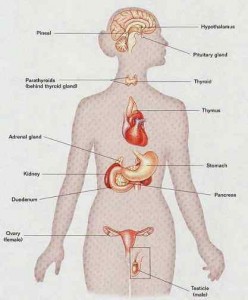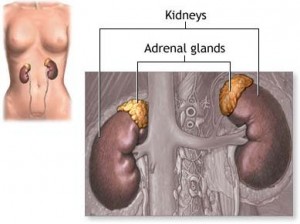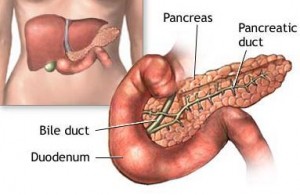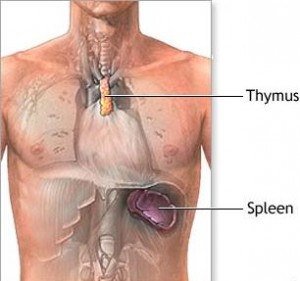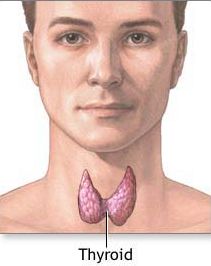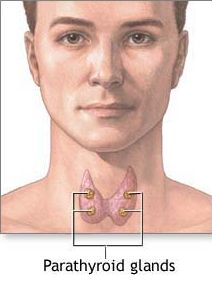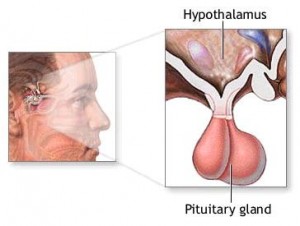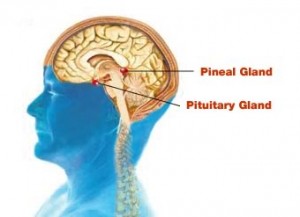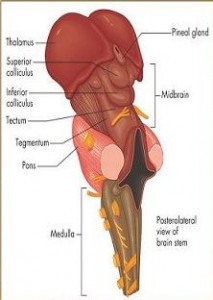There are seven major endocrine glands. Each one generating its special variety of activities which include the production of hormones and types of energy for definite purposes and functions within the body. In the words of Dr. Hoskins the potency of the glands is almost unbelievable, their influence is pervasive in all that we do and in all that we are. They co-operate in determining the forms of our bodies and working of our minds. In following article, Shri Kumarswamiji discusses the purposes and functions of various endocrine glands.
Once there was a medical slogan that “Man is as old as his arteries”. Now it has changed and the slogan is “Man is as old as his glands”.
There are seven major endocrine glands. Each one generating its special variety of activities which include the production of hormones and types of energy for definite purposes and functions within the body. These glands are set near to the spinal column and work closely with its intricate network of nerves. The gland at the base of the spine is known as the gonads, which control the life impulse, the will to survive. The gland at the sacral centre is called adrenals, which run the sex life and which embody the will to create on the physical plane. The gland which is situated in the solar centre (plexus) is known as pancreas which takes care of man’s animal nature. The gland which is situated in the heart centre is known as the thymus. This gland is usually recessional, because of the under developed condition of the man. The thyroid gland is in the throat centre with its four para glands (parathyroid). This gland is the secret of the potential basis for human creativity, leaving the spine and rising up into the head we find the two remaining glands pituitary and pineal gland. The pituitary gland gives the tune to all other gland while the pineal keeps the functions of the endocrine system harmonious and effective.
Diagram depicting the glands in the human body.
Image courtesy — http://www.sirinet.net/~jgjohnso/endoglands.html
The general name for sex glands testicles and ovaries is gonads. The testicle is a gonad, so is the ovary. Hydra grows both and is therefore hermaphrodite. Hermaphroditism is quite common among the lower animals, but usually development of the gonads is so timed and arranged that self fertilization is discouraged. The eggs of one animal are fertilized by the sperms of the another, not by its own. After fertilization of a hydra egg by a hydra sperm, the resulting zygote divides and forms a ring of cells which nourish the gonads. Hydra is a tube lined with cells, the endoderm and covered with a second layer, the ectoderm. Between the two layers is the third sheet of jelly like material. The body and the germ cells in the fresh water are (polypremitive animals) known as the hydra, reproduces both sexually through fertilization of the ovum, by sperm from another hydra and sexually by budding. It is hermaphrodite but not self-fertilization. Since the gonads are the basis of life, they are responsible for making our personality, radiant and magnetic. Hence they need proper training. Sparkling eyes, luminosity, self-reliance are always an indication that the gonads are functioning properly. Their hormones create the inner warmth in the system, preventing all tendencies for inflexibility, hardening and stiffening. If by reason of the severe illness, over indulgence in food, and alcohol, combined with too little exercise, sexual excess and advanced years, the secretion of gonads fails, then we get a picture of senility and old age. The condition called age is nothing but a gradual waning of the endocrine functions with the accompanying reduced cellular activity and Toxaemia, which finally over burdens the body and causes the vital organs to fail.
Adrenal Glands on top of each kidney.
Image Courtesy — http://health.allrefer.com/pictures-images/adrenal-glands.html
On the top of each kidney is a small gland called the adrenal. These glands produce small quantities of specialized chemical substances which mingle into the blood stream and are distributed to all parts of the body. The amount of the secretion is largely influenced by our emotional status. These secretions either stimulate or co-operate with the sympathetic nervous system, and bring about a counter action of the small blood vessel of the skin and digestion of the organs. That the adrenals are of vital importance to life is shown by the fact that death rapidly follows their extirpation. These adrenals have been called the glands of combat, for, to their secretion is attributed the power to summon to battle, the forces of the body in times of stress and strain. These glands exert a powerful tuning influence on the nervous system. The desire to action, the keenness of perception and unfailing courage are expressed by these glands. When they function properly, they intensify the flow of blood stream in to the body.
Pancreas.
Image Courtesy — http://health.allrefer.com/pictures-images/pancreas-1.html
The pancreas is a lobular gland made up of millions of small tubes lined with cells producing digestive fluids. These tubes pour the pancreatic juice into the common duct which carries to the duodenum. Pancreatic juice contains four enzymes; trypsin, which acts on peptones. Amylase, which acts on starch. Lipase, which acts on fat and milk curdling enzyme which is akin to renin. The pancreatic juice is strongly alkaline and easily capable of neutralizing gastric acid. The pancreas is an endocrine gland but in addition to the digestive juice which it pours into the duodenum, it delivers into the blood stream, a hormone called insulin, which prevents diabetes. The pancreas is thus an endocrine as well as digestive gland. Embedded in its substance is small group of cells which differ from the rest, which produce insulin a hormone, having the task of converting glucose into a form in which the body cell can use it. When the cells cease to function the patient develops diabetes. The pancreas exercises its influences over the solar plexus that is a network of sympathetic nerves and ganglion situated behind the stomach and its importance has been brought into bold relief by describing it as the lower brain.
Thymus.
Image Courtesy — http://health.allrefer.com/pictures-images/thymus-spleen.html
The thymus gland which is the largest in infancy, becomes completely atrophied by the time adult age is reached. In the infant the thymus gland lies in the lower part of the neck and extends down into the thorax behind the breast bone or sternum. It is made up of a cortex composed of cells resembling lymphocytes, which comprises and an inner portion in which round cluster of flattened cells are found. In any case at puberty the thymus begins to get smaller and by about maturity, has disappeared altogether during the first 14 years of life. This gland prevents a premature mineralization and hardening of the body so that growth and development can take place undisturbed. When the adolescent stage is reached, the thymus has to shrink as otherwise the adjustment between man and the earthly life will be retarded, may even cause death. It governs the law of adjustment.
The endocrine gland whose function was first recognized was the thyroid. It lies in the neck and consists of two lobes connected by a bridge under the microcosm, the thyroid is found to consist of cavities filled with gelatinous material and lined with approximately square cells. The gelatinous material contains the thyroid hormone thyroxin which is not only necessary to normal growth, the development but essential to physical and mental health. It contains iodine in relatively large quantities and so indistructs when the soil is different in iodine, disease of the thyroid is common. The thyroid may be so large as to hang down upon the chest, in such cases the gland is often inactive and the patient may show signs of cretinism. Four small glands lie in the neck close behind the thyroid. These are the parathyroids. If these glands are removed from an animal, the nervous system and the muscles become highly excitable and nervous twitching occurs which may finally take the form of fits. This state of nervous irritability is known as tetany. The animal cannot long survive without the parathyroid hormone and eventually will die of convulsion.
Image Courtesy — http://health.allrefer.com/pictures-images/thyroid-glands.html
The thyroid is responsible for the inner activity in our system preventing the retention of water, sluggishness of the tissues, the densification of bones. The degree of the thyroid activity makes a person either alert or dull, quick or slow, animated or depressed, keen or apathetic. The proper development and the functions of the sex organs also depend upon a normal and healthy thyroid. The parathyroid glands influence the stability within our body. The maintenance of its metabolic equilibrium by controlling the distribution and activity of calcium and phosphorus in our system. These represent a certain polarity, phosphorus being connected with the central nervous system, calcium with the skeleton. Thus we have a dynamic factor on one side and a static one on the other. The parathyroid maintains a balance between them. Poise and tranquillity are the results of the normal function of these glands.
Pituitary Gland.
Image Courtesy — http://ae.medseek.com/bguide/reftext/images/PituitaryGland.jpg
The pituitary is a remarkable gland. It lies at the base of the brain, attached to it by a stalk and enclosed in a tiny box. It is made up of two lobes which have different origin and different function. The anterior lobe develops from the embryonic mouth cavity and grows upwards to join the post lobe which grows downwards from the brain to meet it. It is no bigger than pea and yet it produces more hormones than any other endocrine glands. The pituitary manufactures a growth hormone and also a number of these hormones, two of these act on the thyroid and suprarenal cortex, and have been named respectively, the thyrotropic and Adrenotrophic hormones. It affects the sex glands by two gonadotropic hormones. It produces a hormone called prolactin which causes the mammary glands to secrete milk and there is evidence that the parathyroids are controlled by a parathyrotropic hormone. Finally the hormone is present which rises the sugar content of the blood, thus controlling the action of insulin which may be called the diabetogenic hormone. The pituitary gland gives the tune to all other glands which are dependent upon it. Thus the way of orchestra is dependent on violin, it controls the inner mobility and the agility of the system promoting the proper growth of our body. It maintains the efficiency of the various structures and prevents the excessive accumulation of fat. A relaxed, harmonious and happy person without any complexes and frustration is sure to possess a normal healthy and active pituitary gland. There are four ventricles in the brain of which the third is the most important. It is the narrow slit lying near the base of the cerebral hemispheres and separating the two thalamic from each other. At the posterior end of this slit a small nodule of grey matter projects backwards and overhangs the corpora quadrigemina of the mid brain. This is the pineal gland. It represents all that remains of third eye which used to adorn the forehead of some of our lizard ancestors in far off times. One of the features of this lizard is that it has a quite well developed third eye behind and between the usual two. This is known as the pineal eye and in man it is represented by the pineal gland.
Anatomical location of Pineal gland Pineal gland, Posteo-lateral view
ImageCourtesy — www.biomagnetictherapy.net/ pineal_gland.aspx, http://www.celtoslavica.de/ bibliothek/electricity.html
The pineal gland is a tiny cone shaped body in the middle of the head behind and just above the pituitary. It contains pigment similar to that found in the eyes and is connected by two nerve cords. With the optic thalamic, it is said to control the action of light upon the body and for this reason scientists have suggested that it is the remnant of the third eye. Yoga science has pronounced it to be the seat of intuition or cosmic consciousness. When the pituitary and the pineal have become fully developed and stimulated, their vibrations fuse and stir into life the third eye of man. When the eye of soul opens man will have personal access to higher knowledge. These seven major glands supplement and depend upon each other. Disorder in the working of these glands gives rise to defection of character or of alternation of behaviour which is the outward and visible expression of the working of the mind. An overactive thyroid produces emotional disturbance, an under active one slowness of thought, the expression and suspicion. Women with an overdeveloped pituitary may develop masculine outlook upon life. The extent of the part played by these glands in the formation of character and personality has been proved by experiments. It is certain that the normal physical health and mental development depend largely upon their balanced functioning; their hormones are responsible for difference between a dwarf and giant, between a happy and cheerful man characterized by mobility, radiance and vitalization of the life processes. In the words of Dr. Hoskins the potency of the glands is almost unbelievable, their influence is pervasive in all that we do and in all that we are. They co-operate in determining the forms of our bodies and working of our minds.
Hence Dr. Hoskins is right in saying that the glands are the “Tides of Life”.
– OM SHANTI | OM SHANTI | OM SHANTIHI –


